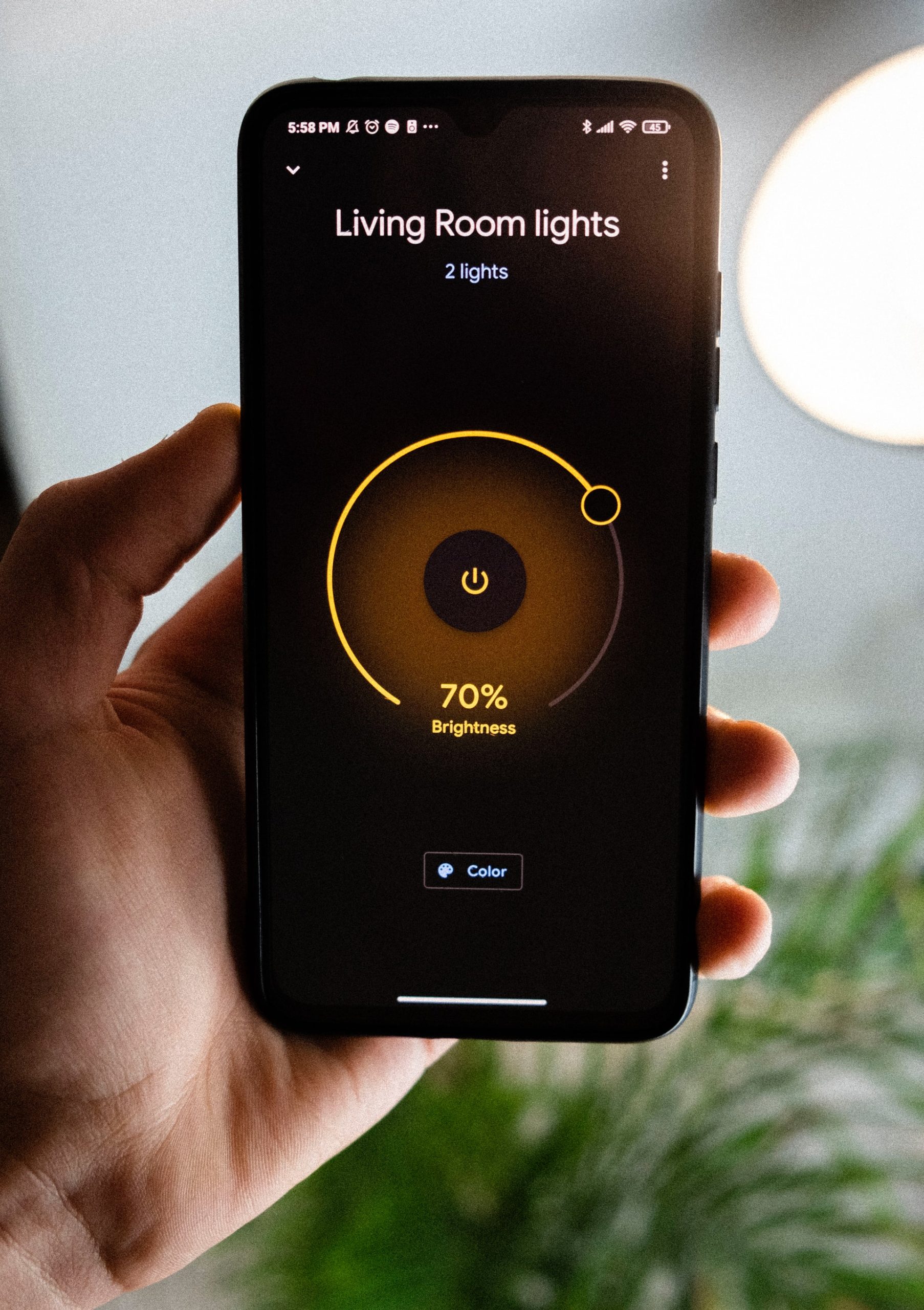As the world’s reliance on connected technology continues to grow, so too does the integration of smart automation systems at home. In particular, smart lighting is being adopted by more everyday households than ever before.
Accessibility and affordability are playing a part in the movement, driving down costs and opening up the option to a much bigger audience. As is the simplicity of installing and integrating today’s most sophisticated devices.
In the case of Evvr’s Zigbee 3.0 In-Wall Relay Switch, for example, installing this smart controller is no more difficult than swapping out a conventional light switch without the need for any neutral wire.
But what is it about smart lighting in particular that has made it such a popular home improvement? Why do interior designers and global tech giants alike see smart lighting as the next big trend for residential properties?
IMAGE: UNSPLASH
How Smart Lighting Systems Work
Smart lighting is all about taking more precise control over the way you illuminate your home. Controllers can be linked with interior and exterior lights all around the home, which can subsequently be controlled from a centralized hub (such a smartphone app) or even controlling the lights by voice control using a smart home assistant like Amazon’s Alexa.
Along with turning lights on and off, these controllers and systems can be used to access a wide range of additional features and functionalities. For example, you can control the intensity, the hue, and even the color of the light emitted or set up on/off cycles to ensure your lights are never accidentally left on.
Smart lighting can be brought into one or more rooms of the home – wherever you spend most of your time. If preferred, it can also be integrated into the home in its entirety, indoors and out. The more extensive the smart lighting system, the bigger the benefits.
What Are The Advantages Of Smart Lighting?
The convenience of being able to interact with a smart lighting system via a mobile device is, understandably, one of its main points of appeal. As is the option of simply speaking commands out loud, using your home’s smart assistant to control your lights.
But besides these somewhat superfluous benefits, there are much more practical (and tangible) advantages to smart home lighting:
1. Improved Aesthetic Value
Firstly, lights that can be adjusted with pinpoint precision can make a huge difference to the aesthetic appeal of your interiors. Lights shining at 100% intensity at all times have limited practical value. By taking more precise control over the intensity, color, and hue of their output, you can adjust them to maximize the visual appeal of your home.
2. Safety And Security
Smart lighting automation can make a major difference to a property’s safety and security. Lights programmed to automatically turn on and off can be an effective deterrent, giving the impression your home is occupied when you are away. Likewise, the integration of motion detectors as part of your smart lighting system can be great for boosting interior and exterior security.
3. Personality
An advanced lighting system can also make it easier to create interiors that reflect your personality and preferences. Just as would be the case when treating a space to a fresh coat of paint, a beautiful lighting system can transform the look and feel of an entire room. All with the added bonus of being able to modify and adjust your preferred themes and settings at any time, in order to suit your mood.
Three More Reasons To Upgrade To A Smart Home Lighting Control System
Still not convinced a smart home lighting system is a worthwhile investment? Along with the above, here are three more reasons why upgrading to smart lighting automation is well worth considering:
1. Ongoing Energy Savings
Not only can transitioning to a smart home lighting system be surprisingly affordable, but it can also pave the way for long-term savings. All aspects of a good smart lighting system for the home will prioritize energy efficiency, with the aim of reducing energy consumption. The technology can also be used to ensure your lights are never left on when nobody is using them, and that the lights you are using are kept only to the intensity level needed.
Over time, these small adjustments to the way you run your home could add up to significant energy savings.
2. Longer Lifespan
It is estimated that the average LED has a lifespan of approximately a decade. However, the brilliance of an LED begins to fade long before this, perhaps calling for replacement after around five years. One of the benefits of a smart lighting system is its potential to significantly increase the lifespan of any type of bulb. Smart lighting technology ensures your bulbs are only used when they need to be, and are illuminated only to the appropriate level.
In doing so, the potential lifespan of a good LED bulb can be increased significantly – perhaps even doubled.
3. Device Integration And Expansion
Lastly, to get into the whole smart technology movement is to discover a world of inspiring home improvement opportunities. Along with smart lighting, additional options to consider include smart thermostats, smart home security systems, smart kitchen appliances, and more. The best smart lighting systems are those that can be both installed easily and integrated with other devices and appliances.
Most households find that once they’ve been bitten by the smart automation bug, there really is no going back.
IMAGE: UNSPLASH
If you are interested in even more technology-related articles and information from us here at Bit Rebels, then we have a lot to choose from.


COMMENTS